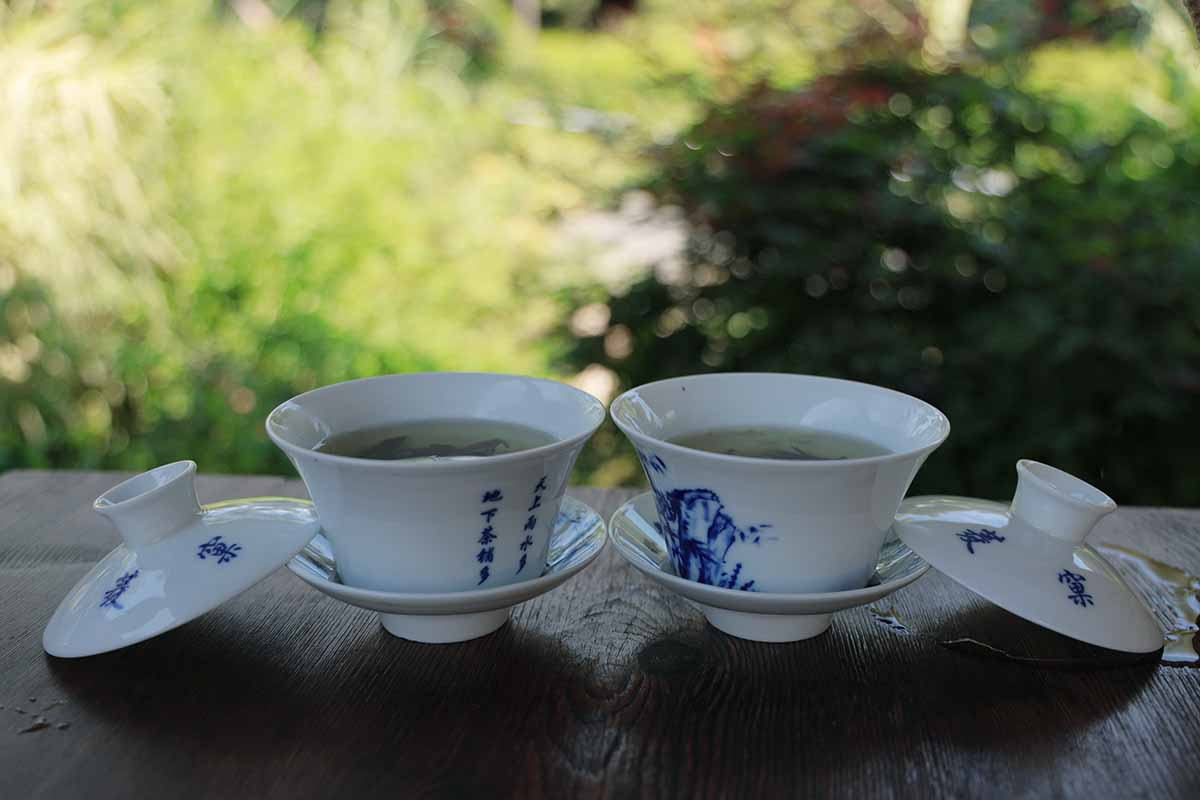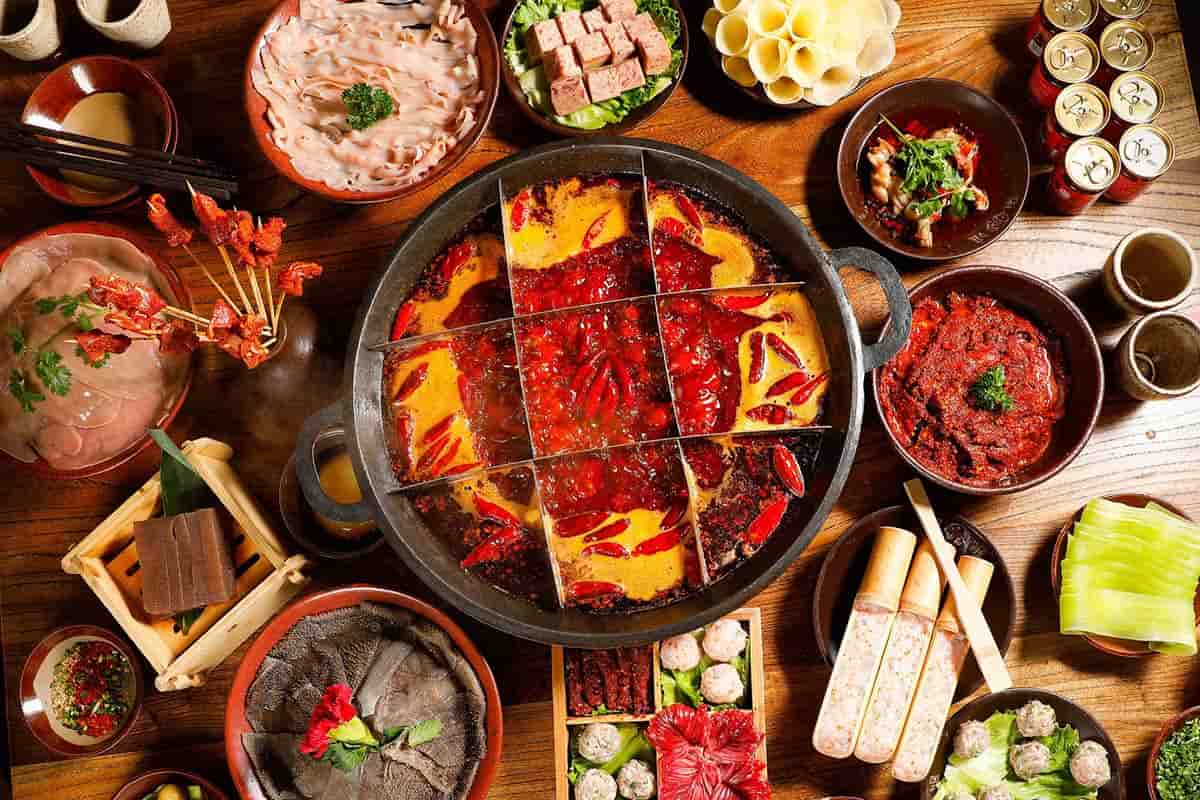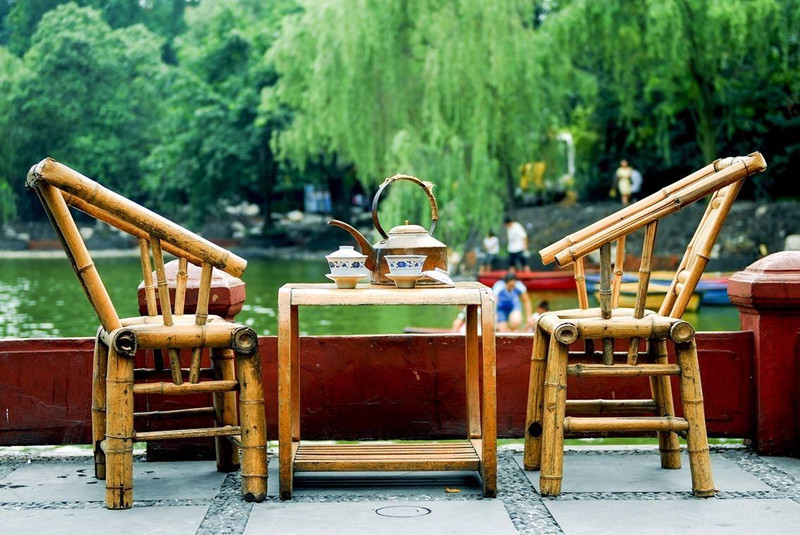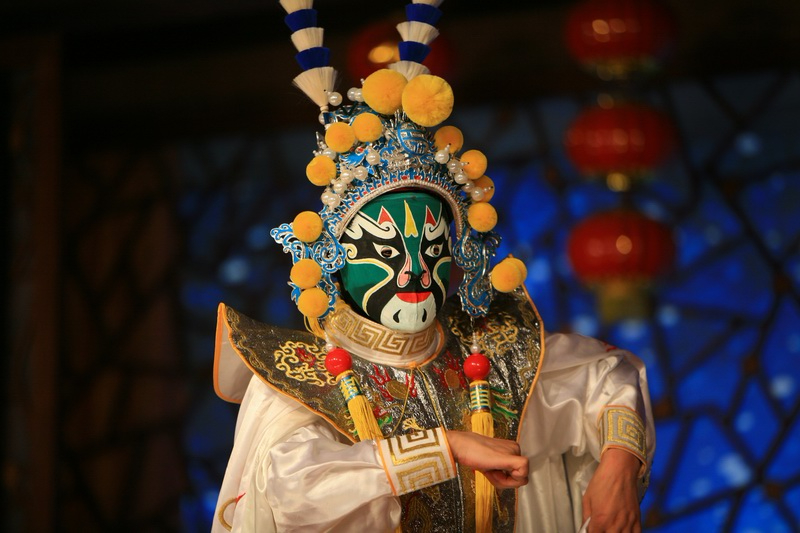Sichuan Hotpot, the most popular dish in Sichuan

The origin of hot pot can be traced back to the early Qing (1644-1911) dynasties, It was a popular dining style at that time among port workers at the Chaotianmen Port on the Jialing River, Chongqing.
In the beginning, the peddlers who worked on the wharf at the time would buy beef tripe, clean and boil it, and then cut beef liver and stomach into small pieces, and place it all into a clay stove. The stove used an iron basin to divide the stove into different sections that separated ingredients with different taste. When the spicy and salty soup boiled, the laborers would begin to eat, each person choosing their own food and own area divided in the stove, so they only eat and pay for what they put in that division, which is cheaper. It was not until the 23rd year of the Republic of China that a small restaurant in Chongqing turned the hot pot into a high-grade dish.
After years of continuous development, the Hot Pot today is much more refined. Although offal still remains as classic hot pot ingredients, high quality meats and seafood ingredients are also common on the menu. The modern hot pot has been shape into a progressive meal that starts with sliced meat, offal, and seafood followed by vegetables and ends with noodles.
The hot pot, with its distinctive flavor, has gradually become the favorite cuisine of local people. Hot pot can be categorized into three types, soup pot, spicy hot pot, and double-flavor hot pot. The soup base is famous for a variety of raw materials and uniquely spicy taste.
Beef tallow, which reduces the taste of chili and Sichuan pepper, is a secret condiment for hot pot. Bean sauce and fermented beans thicken the soup, and minced ginger diversifies the pungency. More importantly are the skills of the chef, who keeps stir-frying the raw materials when making the soup base, making the aromatic and spicy substances ooze into the oil and give off a distinct fragrance.
Besides the secret embodied in the soup base, the tantalizing taste of hot pot is also attributed to local people’s magical treatment of ingredients, which seem to include all edible things from poultry to seafood, mushrooms, pork, mutton, beef, and various types of vegetables.
The dipping sauces are made of sesame oil, oyster sauce, vegetable cooking oil, mashed garlic, and egg whites. Guests usually boil the ingredients in the soup base and then dip them into the sauces which not only give them different flavors, but also help diners produce saliva and reduce heat from the spice.
Consuming hotpot is a communal affair, so people usually gather around the pot while socializing and adding the ingredients into it.
Sichuan hot pot is not only a local delicacy, but also represents the food culture. When eating the hot pot, families and friends gather together and surround by the steaming hot pot, talking with each other, which is warm and harmonious. It is the perfect food choice for the traditional Chinese culture of reunion.
Although the dish is consumed throughout the year, it is most popular during winter because it warms the body and improves circulation.
- HOTEST
- RECOMMEND



















